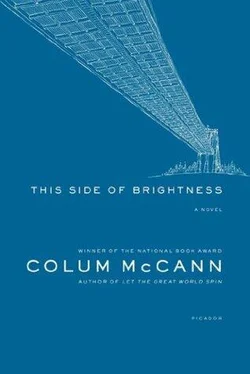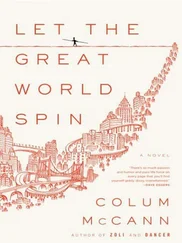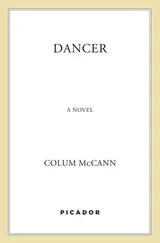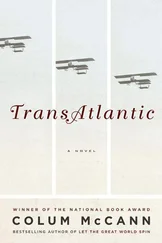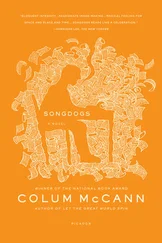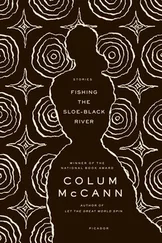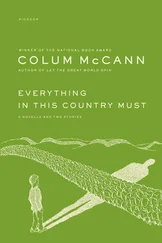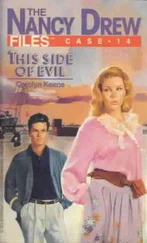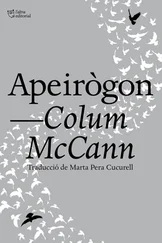The quietest among them is Clarence Nathan. He says hardly a word, but sometimes, when the foreman is not around, he and Cricket challenge each other to walk blind across the beams. They move as if on solid ground. If they fall they will not go far, but thirty feet are as deadly as one hundred. Eyes closed, they never miss a beat.
On the decking, Clarence Nathan turns his hardhat backward, tucks his hair underneath. The signalman speaks in a language of coded radio signals to the engineer in the crane. A huge steel column is hoisted; the men jostle the column into position, and then it gets bolted in at the bottom. The column jags up against the sky. The crane swings a jib line with a spherical ball on the end of it — the men call it the headache ball. Lafayette whistles for a man, and Clarence Nathan gives him a thumbs-up. The line comes toward him.
He reaches out to grab the cable, steadies it, and, with superb insouciance, steps onto the small steel ball.
Suddenly the jib line moves and he is swinging in the air, in nothingness. He adores this feeling: alone, on steel, above the city, his colleagues below him, nothing on his mind but this swing through the air. He holds on with just one hand. The engineer in the crane is careful and brings him slowly up toward the top of the column. The headache ball swings slightly, then stops. Clarence Nathan shifts his weight and moves lightly out onto the thick steel flanges of the column — for one single second he is absolutely free of everything; it is the purest moment, just him and the air. He wraps his legs around the column. On the opposite column, Cricket is waiting. Then the Favco swings a giant steel beam toward them and it inches through the sky, carefully, methodically, and both men reach out and grab it and bring it toward them. “All right?” shouts Cricket. “Okay!” They wrestle the beam into position with brute strength, sometimes using large rubber hammers or their spud wrenches to knock it into place. The sweat rolls quickly down their torsos. They insert bolts and turn them loosely; the bolter-uppers will crimp them tight later on. And then the men unhook the chokers — the beam now sits between the two columns, and the skeleton of the building is growing. Clarence Nathan and Cricket walk along the beam and meet each other in the center. They step off into space and onto the headache ball, arms around each other, and descend to the decking, where the others wait. Sometimes, for a joke, Clarence Nathan takes out his harmonica at the top of the column and blows into it, using just one hand. The wind carries most of the tune away, but occasionally the notes filter down to the ironworkers below. The notes sound billowy and strained, and for this the men sometimes call him Treefrog, a name he doesn’t much care for.
“All right!” Treefrog says, when he and Angela reach the end of the first beam.
Angela is breathing hard. Even in her fur coat he can see her chest rising and falling. “No way in hell you gonna get me up there!”
“It’s simple.”
“Get me down. You just wanna knock. You just like all the rest. I don’t feel good, Treefy. Oh. Treefy.”
“It just looks higher than it is, that’s all.”
“I want my shoes.”
“Just imagine you’re on the ground.”
“Well, I ain’t.”
“If you think you’re on the ground it’s easy-peasy.”
“I ain’t a child,” she says, as she wipes a stream of blood onto her fur coat.
“I never said you were.”
“I’m staying here. Get me my shoes.”
“They’re down there, goddammit.”
“I ain’t leaving till I get my shoes.”
“All right, then, stay here.”
“Don’t leave me, Treefy. Please.”
“Just watch me.”
He places his hand in the hold that he has chipped from the column and, within seconds, he is up on the second catwalk. Five feet below him, Angela still has her arms around the concrete column as if she’s bandaged there. Treefrog wraps one leg around the beam and leans down and takes her hand and — close to violence — he swings Angela through the air and grabs her at the waist and tugs her up. He expected her to shout and scream and kick, but all she says is, “Thanks, Treefy.”
Angela sits shivering on the beam. She has stopped crying and she blinks her good eye several times, wipes more blood from the other.
“I don’t feel good.”
“All you gotta do is walk across here. Relax. See? Up there. Don’t look down. Don’t look down, I said!”
“He hurt me.”
“I know.”
“Did you kill him?”
“No.”
“I want you to kill him,” says Angela. “Kill the asshole. Stuff his throat with a blue washcloth.”
“Okay.”
“Don’t kill him, Treefy.”
“All right already. Whatever.”
“You’re gonna let me fall.”
“Trust me. I worked on the ’scrapers once,” he says.
She stares at him. “I’m scared.”
“It’s okay. I promise nothing will happen to you.”
“You’re weird.”
“You ain’t exactly normal yourself.”
“I’m normal! Don’t call me disnormal.”
“All right all right all right. You’re the normalest woman I ever saw. Come on.”
“You’re cute, Treefy.”
He stands behind her and guides her across the narrow beam. Her steps are slow and precise, and he keeps his arms wrapped around her: only weather stops him — the steel becomes slippy with fog and ice and rain, and lightning is the most dangerous of all. The men have a makeshift rod at the top of the building, but at the first sign of heavy storms they are given the day off. When weather is good, they go at the rate of a floor a week. The sun bounces off the metal, but at least there is a wind to cool the ironworkers down. Although it’s against the rules, Clarence Nathan often works without a shirt. He has a body still free of stab wounds and scars. The foreman, Lafayette, talks of frozen waterfalls in Canada, of climbing on thick ice with special shoes and ropes and carabiners and ice picks, of staying in sweat lodges and incanting chants to the sky. Clarence Nathan likes the thought of it — suspending himself on a river — and he imagines himself halfway up the face of a fall, water trickling behind the ice.
On Fridays, at the end of the shift, the men drink beer together on the top beams, sit in a row, let their legs dangle over, and drop the beer cans into the nets way beneath. They like to achieve this appearance of nonchalance; nonchalance is their greatest gift. They will not be seen without it. Even if they become aware of moist cloud settling around them, they will stay and sit and talk. Beer cans pop. Hardhats are clipped onto carabiners at their waists. Many of the hats have stickers: Harley Davidson insignias, badges from the New York Mets, an emblem from Yellowstone National Park, a circular sticker from the Hard Rock Cafe, and, quite often, Canadian flags with marijuana leaves in the center. The men chat about their upcoming weekend — who they will see, how much they will spend, how many times they will get laid. Their guffaws get carried off by the wind. Only the faintest of sounds rise up from the city; an odd siren, a truck horn. They wait until Lafayette is gone and then take out bags of coke and thin red straws and sometimes a little dope. Matches flare the end of joints. Razors chop through large white grains. One man cups his arms around a fat line of coke so none of it blows away.
High on marijuana — he doesn’t snort coke — Clarence Nathan talks to the helicopters that come across from the East and Hudson rivers.
After work, he takes the train to 96th Street and walks the rest of the way home with the sun arcing downward in the west. His spud wrench hangs from his construction belt and taps in rhythm against his thigh. He still feels as if he’s up on the beams, floating, and he makes absolutely sure his feet don’t touch the cracks in the pavement. It’s a short walk home to where he lives with his family in a small apartment on West End Avenue and 101st, but he goes down to Riverside Park first, smoking as he walks. Sometimes — before he reaches the park — he stops at a parking meter and works on his old trick, balancing on top of the meter on only one foot.
Читать дальше
